Who Marries a Bride and Groom? Understanding Wedding Officiant Roles
When you consider the essence of a wedding, it boils down to the ceremonial union of a bride and groom through a declaration of their love and commitment to each other. The question of who marries the couple traditionally refers to the officiant who presides over the wedding ceremony. This individual may have religious or secular authority and is responsible for conducting the ceremony, ensuring the legal formalities are followed, and ultimately declaring the couple married.
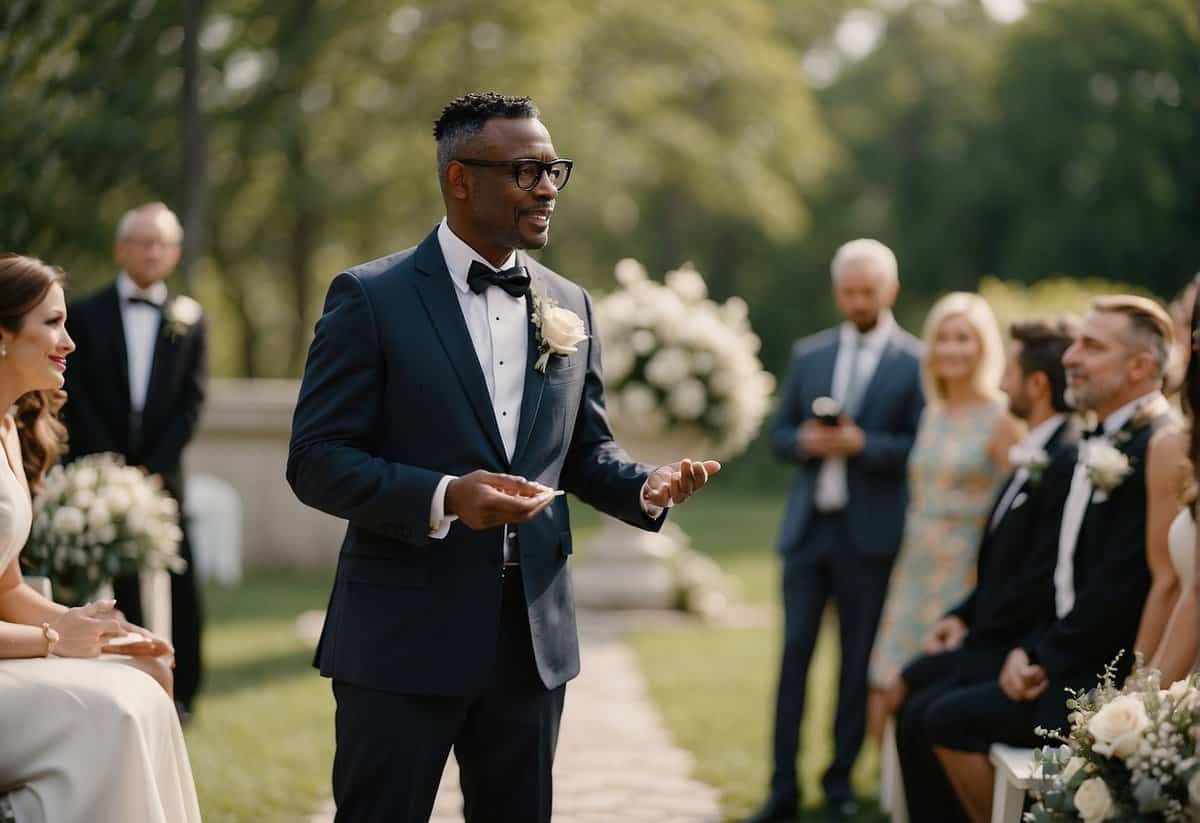
In many cultures and jurisdictions, the officiant has the legal capacity to solemnize the marriage, making it official in the eyes of both society and the law. The choice of officiant can range from a religious figure like a priest, rabbi, or imam, to a civil officiant such as a judge, justice of the peace, or a government official. The selection is often influenced by the couple’s personal beliefs, cultural traditions, and legal requirements of the region where the marriage takes place.
Key Takeaways
- Weddings are a declaration of love and commitment between the bride and groom.
- The officiant presides over the ceremony and ensures legal compliance.
- The selection of an officiant is influenced by personal beliefs and cultural traditions.
The Wedding Ceremony
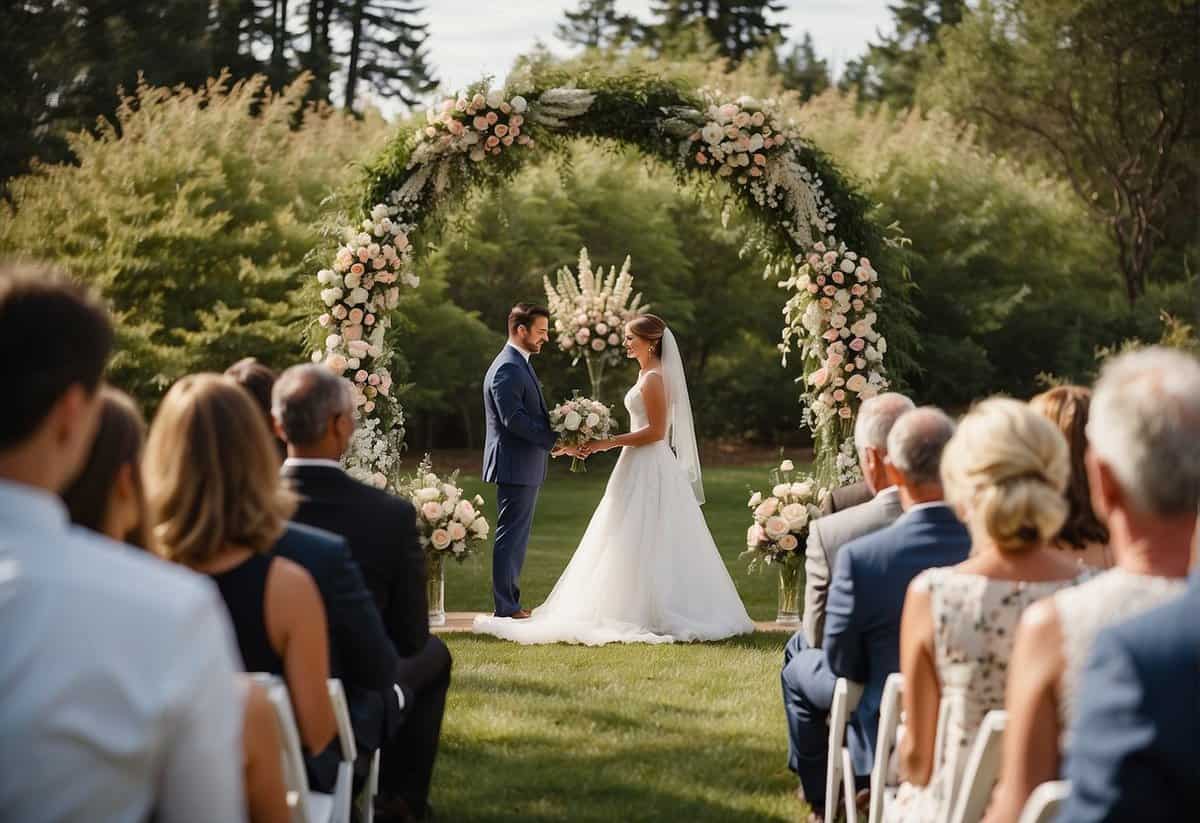
In the celebration of a wedding, you’ll witness the beautiful blend of tradition and personal touch as the bride and groom commit to a lifetime together, surrounded by those who play crucial roles in supporting and celebrating their union.
Roles and Responsibilities
Key players in a wedding include the officiant, who is typically ordained to legally marry the couple. They oversee the exchange of vows and pronounce the couple married. The bride and groom stand at the altar, prepared to tie the knot. Supporting the couple are their selected bridesmaids and groomsmen, with a maid of honor and best man often playing more significant roles. Ushers assist guests, while the ring bearer and flower girl add charm to the procession.
- Bride & Groom: Commit to marriage, exchange vows
- Officiant: Legally marries the couple, oversees vows
- Bridesmaids & Groomsmen: Support the couple, help with ceremony logistics
- Maid of Honor & Best Man: Hold rings, assist bride and groom
- Ushers: Guide guests to their seats
- Ring Bearer & Flower Girl: Carry rings and scatter flowers
Ceremony Proceedings
The ceremony typically begins with a procession led by the officiant, followed by the groom, best man, and groomsmen. Soon after, the bridesmaids, maid of honor, flower girl, and ring bearer make their entrance. The bride’s arrival is the culminating moment before the exchange of vows. After vows, the couple may follow rituals like lighting a unity candle, then the exchange of rings occurs. Finally, the officiant pronounces the couple married and may present the marriage license.
- Officiant
- Groom and Best Man
- Groomsmen
- Bridesmaids
- Maid of Honor
- Flower Girl and Ring Bearer
- Bride
Attire and Symbolism
Traditional wedding attire often includes a white dress for the bride and a tuxedo or suit for the groom. However, gender-neutral options are increasingly common. Personal flowers like bouquets and corsages, symbolize beauty and life. The clothing choices, along with symbols like the rings, represent the couple’s commitment and partnership.
- Bride: Typically wears a white dress, symbolizing purity
- Groom: Wears a suit or tuxedo, signifying formality
- Gender-Neutral Options: Available for attire beyond traditional norms
- Personal Flowers: Bouquets and corsages highlight beauty
Remember, each element and person in the ceremony plays a significant role in this momentous occasion.
Pre-Wedding Preparations
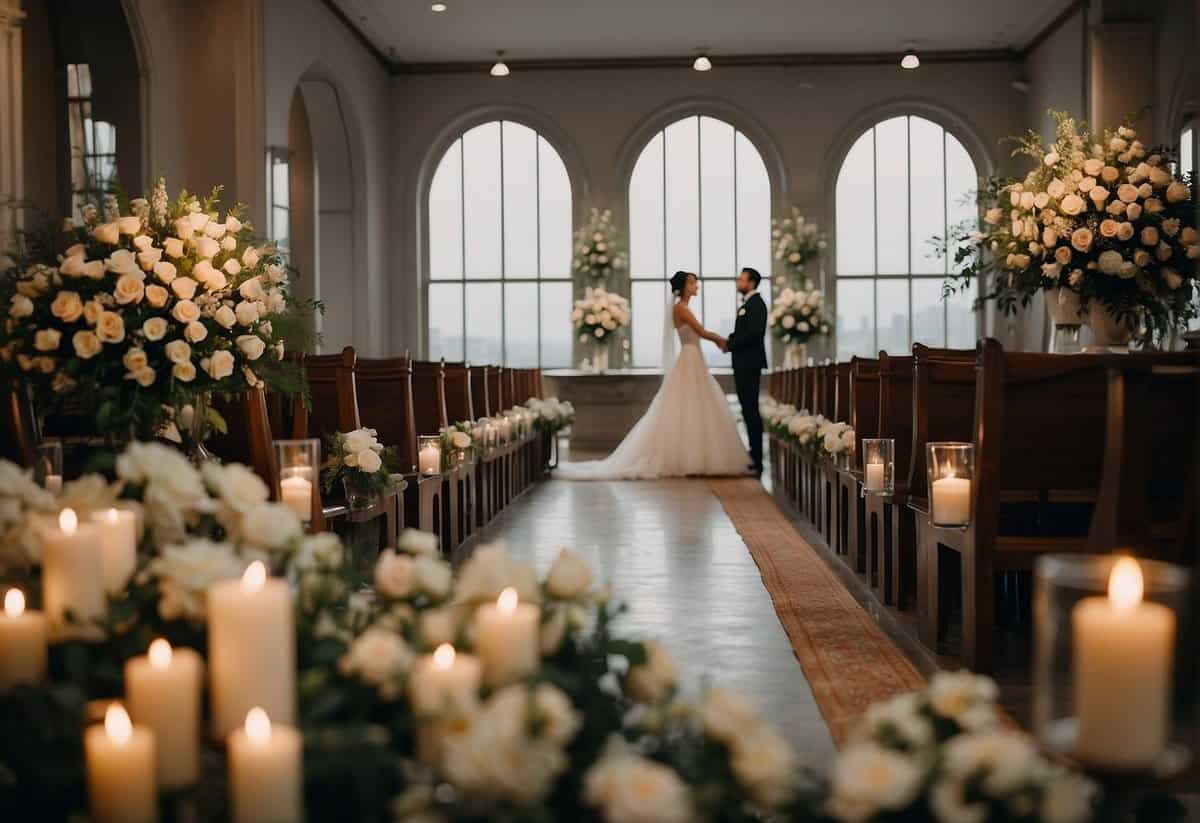
Embarking on pre-wedding preparations involves meticulous planning and a clear understanding of your budget. Navigating through this phase with a solid strategy can minimize stress and ensure that you cover all necessary wedding expenses, from securing your venues to the officiant’s fee.
Planning and Budgeting
You and your partner will need to have the money conversation early to set realistic expectations for your wedding. It’s essential to itemize potential expenses and allocate funds accordingly. Here’s a simple breakdown of budget categories:
- Venue: Including ceremony and reception
- Catering: Food and drink costs
- Photography/Videography: Capturing unforgettable moments
- Entertainment: Music and other performances
- Flowers and Decor: Setting the scene
- Dress and Attire: For the bride and groom
- Officiant’s Fee: For conducting the ceremony
A well-organized wedding budget spreadsheet can be your best friend throughout the planning process.
Celebrations Before the Wedding
Your engagement signifies the countdown to your wedding and the onset of several celebratory events:
- Engagement party: A toast to the new chapter.
- Bridal shower: Gifts and good wishes for the bride’s new life.
- Bachelor and bachelorette parties: The quintessential getaways before the big day.
- Rehearsal dinner: An intimate gathering for the wedding party and close relatives.
Remember, these events are meant to be joyous, not a source of financial strain. If necessary, consult with the bride’s father or whoever is contributing to the budget to help balance these expenses carefully.
The Reception
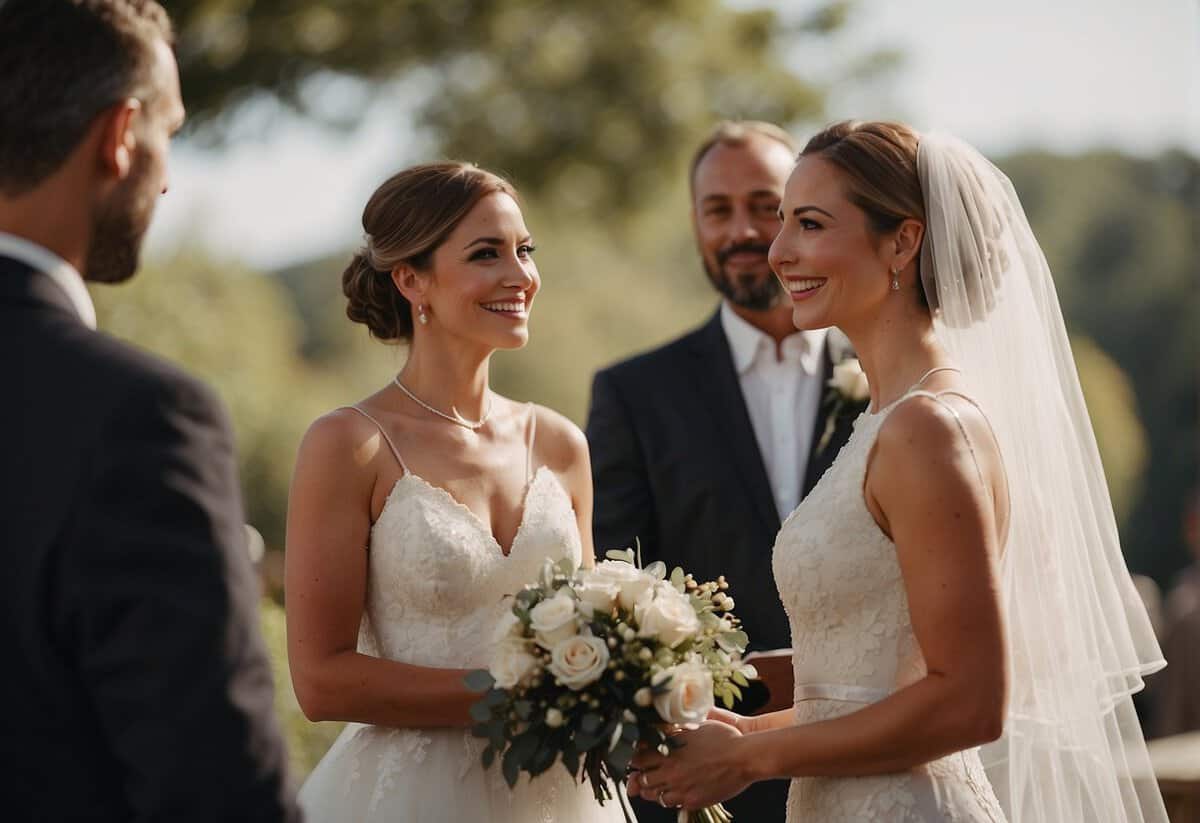
After the touching ceremony, the reception is yours to celebrate the union with food, dance, and joy. It’s where you can truly revel in the newlywed status and indulge in traditions that personalize your day.
Reception Traditions
At the reception, the spotlight is on you, the married couple, as you embark on your first dance—a symbol of unity and love. But that’s just the beginning. You’ll also witness the iconic cake cutting, which represents the first activity done together as a couple. Later, toasts will be made, often led by the bride’s father, as words of wisdom and good wishes are shared with you and your guests. The reception traditions you choose help in creating memories that will last a lifetime.
- First Dance: A cherished moment between you and your partner.
- Cake Cutting: Symbolizes your first joint task as a married couple.
- Toasts: A time for appreciation and blessings from loved ones.
Guest Experience
Your reception is as much for your guests as it is for you. They’re here to celebrate your love, and their experience matters greatly. From the location which sets the stage, to the carefully curated guest list, each detail impacts their enjoyment. Guests will often bring gifts, a token of their support and congratulations, so consider setting up a designated spot for gift collection. Remember, the reception is your chance to express appreciation for those who’ve supported you on this journey.
- Location: It provides the backdrop for your celebration.
- Guest List: Determines who you share this special moment with.
- Gift Collection: A place for guests to leave their well-wishes and gifts.
After the Wedding
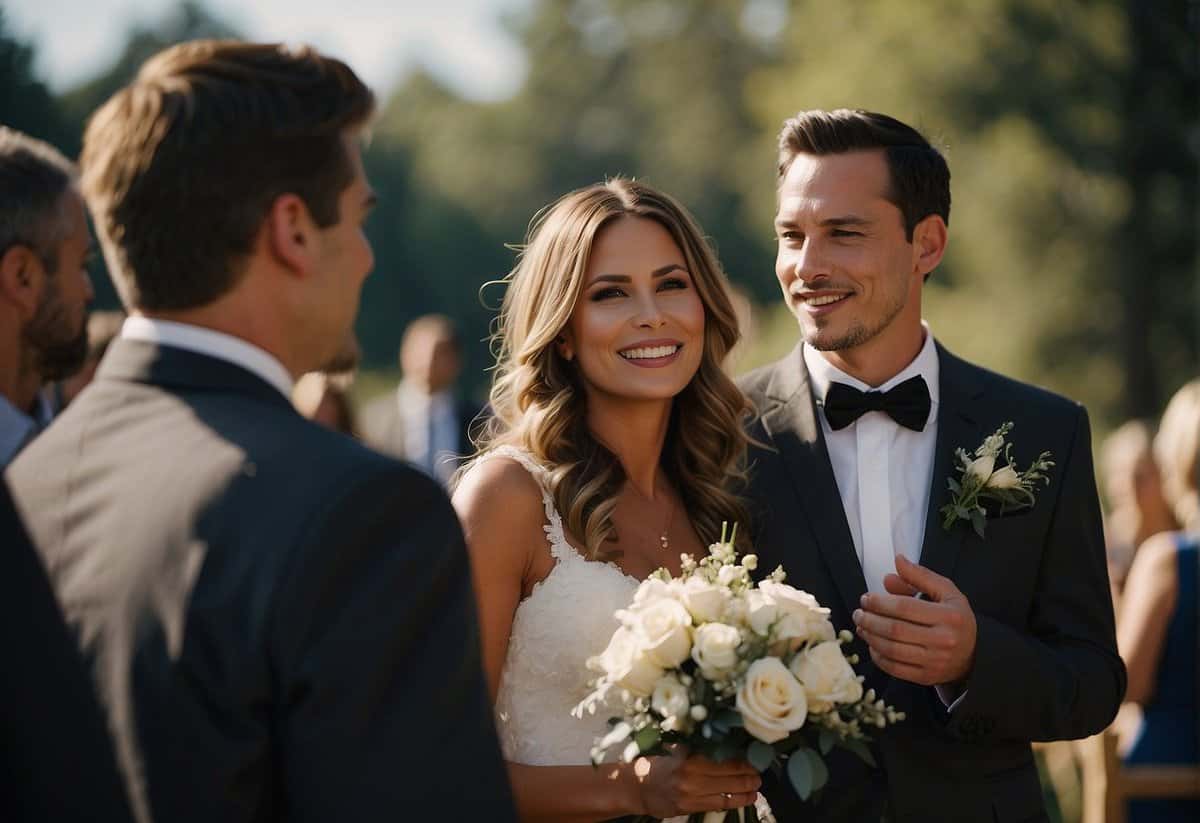
After the vows are exchanged and the celebration winds down, your journey as a married couple truly begins. This period is marked by legal formalities and the exciting onset of newlywed life.
Legal and Practical Steps
As you embark on this new chapter, it’s time to update your marital status. Your first order of business should be to sign and submit your marriage license to the proper authorities. This document officially records your union and is essential for many other post-wedding processes.
With the license in hand, you can proceed with a name change, if desired. This involves updating your name across various personal records, including:
- Social Security card
- Driver’s license
- Bank accounts
- Utility bills
Working together on financial management is also a cornerstone of newlywed life. Consider setting up joint accounts, discussing investment strategies, and creating a household budget. Open communication and commitment to mutual financial goals are instrumental in building a solid foundation for your life together.
The Newlywed Life
Commence your marriage with a celebration of your love—the honeymoon. This getaway not only gives you both a chance to unwind but also fortifies your union as you create new memories. When you return, daily life resumes with an added layer of shared appreciation and love.
As you settle into the routine of married life, prioritize:
- Communication: Engage in frequent and honest conversations to navigate life’s ups and downs.
- Appreciation: Small gestures of thanks and recognition can strengthen your bond.
- Commitment: Reinforce your dedication to each other by setting mutual goals and facing challenges as a team.
Remember, embarking on the journey of marriage is about growing together, learning from one another, and nurturing the love that brought you together in the first place.
Frequently Asked Questions
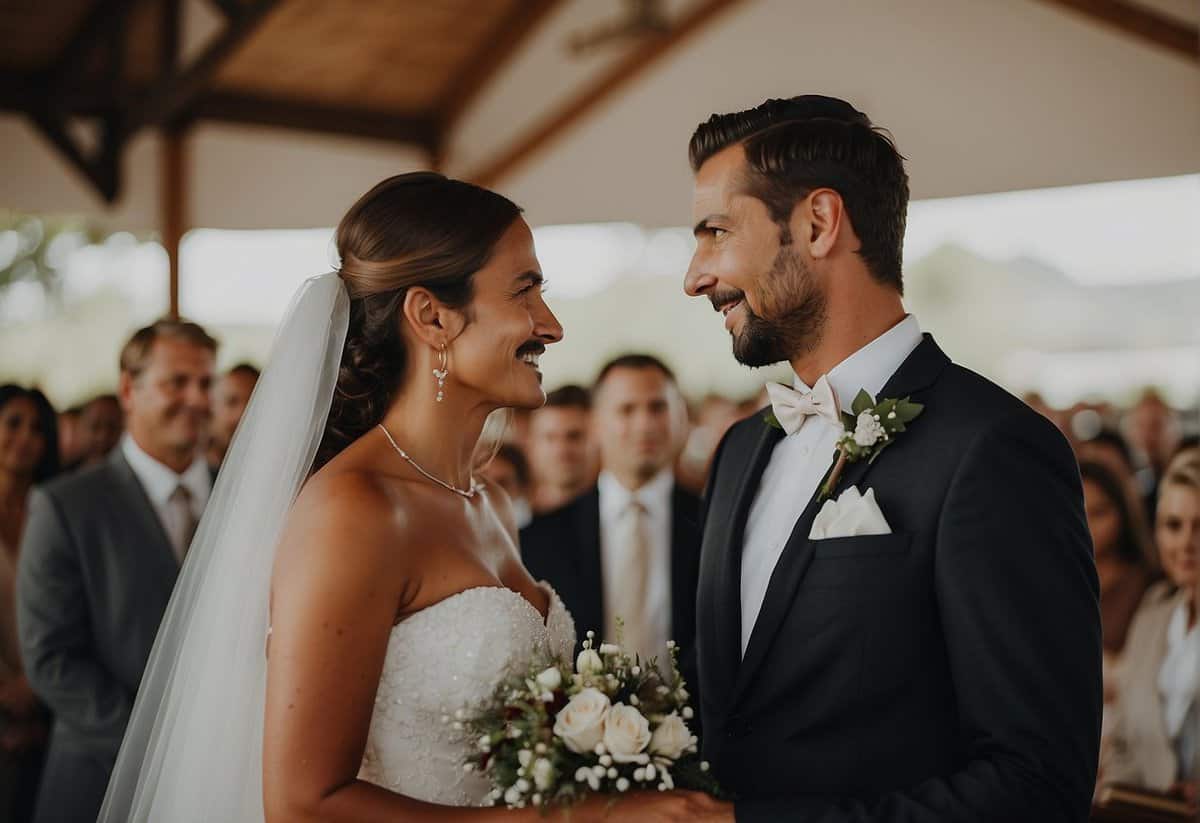
When planning your special day, it’s important to understand the various aspects of selecting the right person to officiate your wedding. Let’s dive into some common inquiries to ensure your ceremony is conducted smoothly and legally.
Who is qualified to officiate a wedding ceremony?
Individuals authorized to officiate weddings vary by location but often include religious leaders, judges, justices of the peace, and certain public officials. In some areas, certified officiants have completed specific training and licensing to perform ceremonies.
What are the various titles for someone who conducts a wedding?
The person conducting a wedding can be known as an officiant, minister, celebrant, clergy, rabbi, imam, priest, and in some cases, a judge or a justice of the peace.
What needs to be done to obtain a marriage officiant license?
Obtaining a marriage officiant license usually requires completing an application with the local government and possibly taking an officiant course or test. Requirements vary widely, so it’s indispensable to check the specific regulations in the jurisdiction where the wedding will take place.
Is it possible for just anyone to conduct wedding ceremonies?
Not just anyone can conduct a wedding ceremony; the person must be legally recognized to do so in the jurisdiction of the ceremony. However, ordination through certain organizations can sometimes allow individuals to officiate, provided they fit legal stipulations.
What does a marriage officiant usually say during the ceremony?
During the ceremony, a marriage officiant typically leads the couple through their vows, officiates the exchange of rings, and pronounces the couple married. The specific words vary based on personal preference and the type of ceremony being conducted.
How can I find a reputable marriage officiant in my area?
To find a reputable marriage officiant in your area, seek recommendations from recently married friends, read online reviews, and consult wedding directories or planning websites. It’s also beneficial to interview potential officiants to find someone whose style aligns with your vision for the ceremony.

